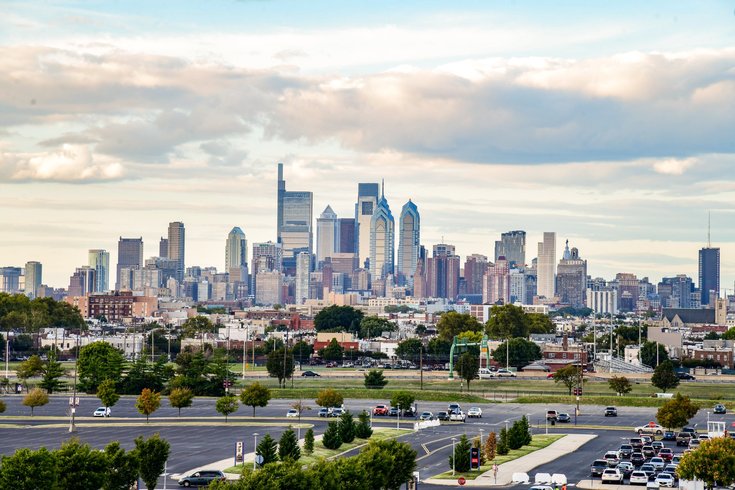
April 24, 2024
 Kate Frese/For PhillyVoice
Kate Frese/For PhillyVoice
The Philadelphia metro area ranked 35th-worst in the nation for ozone pollution in the American Lung Association's annual State of the Air report. That marked a slight improvement over its No. 28 ranking in last year's report.
The air quality in the Philadelphia region is showing some signs of improvement, but it remains the most polluted in the Mid-Atlantic in regard to ozone smog, according to a new report from the American Lung Association.
The annual "State of the Air" report also gave the Philadelphia region a failing grade for year-round particle pollution and a C grade for short-term particle pollution. It received an F for ground-level ozone smog, the kind of air pollution that affects the largest amount of people in the United States.
Despite that failing grade, the Philadelphia metro area – defined by the report as including parts of Pennsylvania, New Jersey, Delaware and Maryland – improved from the 28th-worst polluted metro area to the 35th-worst. It averaged 5.5 unhealthy days per year in the 2024 report, which was based on data from 2020 to 2022. That was down from 6.5 unhealthy days in the 2023 report.
The Philly region also from the 55th-worst metro area in terms of short-term particle pollution to the 73rd-worst, moving from a D to a C grade. It averaged 1.5 unhealthy days, an improvement from 2.3 unhealthy days. In regard to long-term particle pollution, the Philly metro area improved from 46th-worst to 65th-worst.
The report defined the Mid-Atlantic region as including Pennsylvania, New Jersey, Delaware, Maryland, Virginia, West Virginia and Washington, D.C. The American Lung Association has been publishing "State of the Air" reports since 2000 to share information about air quality around the nation.
According to the report, more than 131 million Americans live in areas with failing grades for ozone or particulate pollution and 11.7 million more people are breathing unhealthy air than last year – with people of color disproportionately affected by pollution. Both ozone and particle pollution can cause serious, even deadly health issues, such as asthma attacks, heart attacks and preterm births, among other problems. Particle pollution is also a cause of lung cancer.
"Almost 40% of people who are living in the U.S. are exposed to at least one measure of unsafe air pollution," said Dr. Jamie Garfield, professor of thoracic medicine and surgery at Temple Lung Center at Temple University Hospital. "It's happening to all of us. This is an everybody problem, and so everyone should care."
The increased number of people who face health risks due to air pollution is a result of a combination of factors including extreme heat, drought and wildfires, which has resulted in a steady increase in "deadly particle pollution," especially in the West, the report indicated.
Both ozone pollution and particle pollution generate increased inflammation in the lungs, said Garfield, who is also a national spokesperson for the American Lung Association.
"The lungs are inundated by these tiny particles that set off a huge cascade of inflammatory responses," which can cause breathing issues, aggravating asthma, Garfield said, speaking about particle pollution.
That means people with asthma have to minimize the time they spend outdoors on days when the air quality is poor to protect themselves, Garfield said.
More than 1.9 million children and nearly 9.8 million adults with asthma live in counties that received an F for at least one pollutant, the report found. More than 600,000 children and some 3.1 million adults with asthma live in counties failing in all three measures.
People with chronic obstructive pulmonary disease, lung cancer, cardiovascular disease and those who are pregnant also are particularly vulnerable to illness and death from pollution, according to the report.
The report also indicated, as in past years, that people of color are disproportionately affected by poor air quality. In parts of the country with the worst pollution, 63% of the nearly 44 million residents are people of color, compared to 37% who are white.
"The concentration of the pollution is increased in more congested areas, and people of color are disproportionately affected by that," Garfield said. "It's not that they have different lungs, but that, over time, they are subject to higher levels of pollution and other comorbid diseases, like diabetes and heart disease, that makes the impact of these exposures greater."
More than 29 million children, about 20 million older adults and 16 million people in poverty – groups at higher risk for negative health outcomes due to poor air quality – live in counties that received an F for at least one pollutant, according to the findings.
The report reflects a more rigorous standard recently enacted by the U.S. Environmental Protection Agency for year-round levels of fine particle pollution, "which allows for the recognition that many more people are breathing unhealthy air than was acknowledged under the previous weak standard," according to the report. The EPA has not yet revised standards on ozone pollution.
"We still have a lot of room to improve," Garfield said. "We should use this (report) as an impetus."